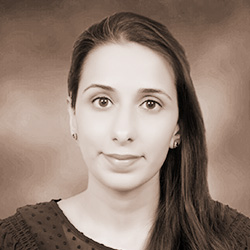How Maths Can Qualify For R&D Tax Credits
Mathematics is often found behind the scenes of innovation. Maths is crucial to developing algorithms, optimising systems, and modelling uncertainties; it’s no surprise the HMRC have adjusted the R&D tax credit guidelines to include projects in the field.
Since April 2023, advances in pure mathematics have been eligible for R&D tax relief. In practice, this means that a wider variety of projects can benefit from this incentive and get up to 26.97% of these costs back.
What is pure mathematics?
Pure mathematics focuses on exploring abstract mathematical concepts, developing new theories and techniques, and identifying patterns and relationships within the discipline. Constructing mathematical models, analysing mathematical structures and symmetries, and examining the fundamental principles are all part of this field.
For example, elliptic curves have significant applications across physics, computer science, and engineering. As mathematical objects, elliptic curves are especially notable for their role in cryptography. A researcher developing a novel algorithm to perform computations with elliptic curves would be working in pure mathematics.
How does maths relate to R&D?
Qualifying R&D must include efforts to make an advance in science or technology by resolving scientific or technological uncertainties.
Since HMRC’s update to the guidelines, mathematics is now included as a field of science:
“Mathematical techniques are frequently used in science. From April 2023 mathematical advances in themselves are treated as science for the purposes of these Guidelines, whether or not they are advances in representing the nature and behaviour of the physical and material universe.” Paragraph 15B, BEIS Guidelines
If you’re not sure if your mathematical work qualifies, ask yourself: did the research establish a new mathematical framework, extend an existing theorem, or translate abstract concepts into practical applications? The outcomes should clearly illustrate scientific progress.
Interdisciplinary collaboration can also be eligible, especially since pure mathematical research often involves efforts combining expertise in mathematics, software engineering, and other domain-specific sciences.
When presenting a technical narrative to HMRC in the Additional Information Form (AIF), you must clearly explain the mathematical progress achieved. This should include a description of the research question, the mathematical concepts and methods used to address it, the objectives pursued and how they build on the limits of existing knowledge.
To meet HMRC’s requirements, companies working on mathematical R&D should maintain meticulous records, which include research logs, annotated equations, computational results, and correspondence. Thorough documentation not only helps you explain your R&D methods but will also be immeasurably helpful in the event of a compliance check.
Mathematics and R&D
Pure mathematics qualifies as a science in its own right but is also an integral component in many aspects of R&D. As such, mathematical research and its applications can meet HMRC’s criteria for R&D through pure theoretical development or as part of a project in another scientific or technological field.
Examples of Mathematical R&D
The design and refinement of algorithms are quintessential examples of mathematical research in R&D. For instance, creating a machine learning algorithm to improve diagnostic precision in medical imaging may involve designing optimisation techniques to accommodate uncertainty and complexity. Such efforts represent a clear mathematical advance.
Optimisation and systems analysis is another area where we may find pure maths. Industries ranging from logistics to renewable energy often struggle with optimisation problems. For example, a logistics firm aiming to optimise delivery routes for electric vehicles must contend with variables such as vehicle range, charging infrastructure, and customer time windows. Resolving these complexities frequently requires original mathematical modelling and optimisation approaches.
Quantifying uncertainty through statistical modelling is another critical facet of R&D, particularly in fields like finance, climate science, and epidemiology. Constructing or refining such models often necessitates tackling unresolved scientific questions, particularly when existing methodologies fail to capture real-world variability or dynamics. A relevant example is the development of probabilistic risk models by an insurance company, which might use statistical distributions or hybrid techniques to better predict actuarial trends.
Finally, cryptographic advances heavily depend on advanced mathematics, such as number theory and algebra. Cryptography is the foundation of cybersecurity; encryption algorithms, particularly those addressing efficiency, scalability, or resistance to quantum computing threats, could meet the criteria for R&D.
The Intangibility of Mathematical Research
Unlike physical R&D, mathematical advances often lack tangible prototypes or experimental outputs. Instead, progress is demonstrated through theoretical proofs, simulation results, or improved computational performance.
This intangibility necessitates precise descriptions of the existing scientific baseline and the advance that your company sought to make on it. In addition, the uncertainties faced and how they are addressed must be clearly articulated.
Could you benefit from R&D tax relief?
At Tax Cloud, we help companies turn complex mathematical proofs into compelling narratives that unlock R&D tax relief opportunities.
Our team of experts will review your claim at each stage and guide you to a robust and optimised claim. We even take care of the submission to HMRC, so you can save time and get back to innovating.
With our clear guidance and support throughout the process, you can rest assured that your claim is in safe hands. Why let potential savings pass you by? Get in touch with our team.
- Submitting R&D tax claims since 2001
- Strong track record spanning 20+ years delivering R&D tax credit claims
- Over £70m claimed and counting
- Industry leading specialists
- We employ technical, costing and tax experts and tax experts
- Confident of delivering value to our clients, we offer our R&D tax services on a success fee-only basis.
Meet some of the team behind Tax Cloud
 Barrie Dowsett ACMA CGMA
Chief Executive Officer
Barrie Dowsett ACMA CGMA
Chief Executive Officer
 Jillian Chambers
Technical Analyst/Writer
Jillian Chambers
Technical Analyst/Writer
 Lauren Olson
Technical Analyst Manager
Lauren Olson
Technical Analyst Manager
 Rabia Mohammad
Corporate Tax Incentives Manager
Rabia Mohammad
Corporate Tax Incentives Manager
 020 7360 4437
020 7360 4437